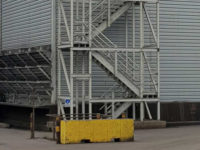Project Delivery Method: Design-bid-build (DBB)
Project Type: New infrastructure (central heating)
Owner Team: The college president, owner representative (consultant), project manager of capital projects, and facility manager (in-house staff)
Project Delivery Team: HVAC engineer (lead consultant); plumbing, electrical, structural, fire protection, and security consultants; a third-party commissioning consultant (CxC); and third-party testing, adjusting, and balancing (TAB) technician
DBB Project Team: General contractor, project manager, mechanical-electrical coordinator, heating subcontractor, automatic temperature control (ATC) subcontractor, and boiler service subcontractor
Application 2019 ASHRAE Handbook: Chapter 8, Educational Facilities, and Chapter 28, Power Plants
HVAC Systems and Equipment 2020 ASHRAE Handbook: Chapter 3, Central Cooling and Heating Plants; Chapter 13, Hydronic Heating and Cooling; and Chapter 32, Boilers
References: 2019 ASHRAE Handbook, Applications; and 2020 ASHRAE Handbook, HVAC Systems, and Equipment
Other References: ASHRAE Practical Guide to Seismic Restraints, ASHRAE Standard 202 (Commissioning Process for Buildings and Systems), and 2021 American Society of Mechanical Engineers (ASME) Boiler and Pressure Vessel Code. Refer to the codes and standards located in the back of each ASHRAE Handbook for additional reference.
DESIGN INTENT DOCUMENT (DID)
Heating Design Intent:
- This optimum boiler heating equipment selection and the project’s design intent document are based on the analytical process outlined in ASHRAE Handbook 2020 Chapter 1, HVAC System Analysis and Selection, and includes the following:
- Owner’s project requirements (OPR): building program goals and additional goals
- Finalized system selection shall be to replace a 20-year-old fire tube boiler with a new hot water condensing boiler to operate in series with two existing fire tube boilers
- Controls shall include new system automatic controls interfaced with the existing building automation system (BAS) controls, equipment-furnished controls, BACnet interface, internet interface, and populating new equipment data into the existing computerized maintenance management software (CMMS) system from in-house operation and maintenance (O&M) staff
- Functional goals: (refer to Chapter 1, 2020 Handbook)
- Budget goals: First cost and operating cost
- Timeline goal(s): Summer installation, balancing, and commissioning due dates
- Management goals: 250,000-square-foot deferred maintenance compliance per the school’s phase 1 master plan, service contracts for the boiler plant, and capital projects management oversight
BASIS OF DESIGN (BofD) DOCUMENT
- The heating BofD criteria shall be in-sync with the project delivery method and owner’s project requirements.
- Utilities shall be the existing electrical 480/3/60 power and natural gas service to serve the new gas-fired 200-boiler horsepower (BHP) boiler No. 1 to serve an existing three-boiler central heating plant within the facility. This boiler replacement project is phase 1 of a three-part boiler replacement project based on the college’s deferred maintenance master plan
- New hot water pumps shall replace two existing end-suction pumps.
- New boiler system sequence of operation: The new condensing, highly efficient boiler will become the lead boiler and operate from Sept. 15 through May 15. The existing boiler No. 2 shall be the lag boiler with boiler No. 3 to become the standby boiler
- The existing central heating plant boiler automatic controls shall be reprogrammed to accommodate the design criteria. The new boiler self-contained automatic controls shall be interfaced with the existing BAS. Existing controls shall also interface with the building security system and electrical power distribution.
- The new lead hot water supply pump will provide variable flow to the building heating system, while the lag boiler will remain constant flow
- Conceptual/Schematic Phase General Notes:
- The HVAC design engineer shall provide system flow diagrams with the three documents (OPR, DID, and BofD) along with ATC sequences of operation that is integrated with the existing BAS control system and electrical one-line diagram.
- The HVAC design engineer shall include an electrical data sheet to coordinate with the electrical design engineer, a plumbing data sheet to coordinate with the plumbing design engineer, and equipment and distribution weights to coordinate with the structural design engineer as well as DID to the security consultant.
Click here to see this month’s quiz
Click here to see the answers to this month’s quiz.





